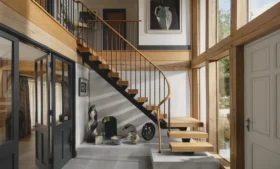Community Infrastructure Levy Explained
Most new developments – commercial or domestic – are expected to meet their fair share of the costs of infrastructure needed to support them, including things like roads, schools, public open spaces, libraries and so on.
Historically, councils have adopted somewhat arbitrary policies on fees. Many require those seeking planning permission to sign legal agreements (so-called ‘Section 106’) to pay whatever the local authority deems appropriate. Some councils have even sought payment of these sums ‘up front’ with the application.
Amounts vary greatly from area to area – some councils don’t charge where only a single house is proposed, while others do. This has resulted in a postcode lottery. So in one area a new house might attract a requirement to pay as much as several tens of thousands of pounds, whereas the council nextdoor might charge nothing at all.
Where does the CIL come in?
The Government has aimed to simplify the whole contributions process via the Community Infrastructure Levy, or CIL. Whether councils choose to adopt this procedure instead of Section 106 Agreements is voluntary, and the CIL is still very much in its infancy.
As with any Government tax, its provisions are complex, and feature plenty of reliefs and exceptions, including one which takes conversions out of the scope of the levy on the basis that they don’t create new floorspace. The CIL is levied in pounds per m2 of floorspace and applies to all new dwellings and to extensions over 100m2. This includes any additions of that size built as permitted development (without the need to get planning permission). Fees for a replacement dwelling should be charged according to the additional space created.
Payment is triggered by the commencement of development. Rates are set locally and vary considerably amongst those councils that have adopted the CIL. Rates in rural areas are typically around £75 per m2, while some London Boroughs charge as much as £300 per m2. Unlike Section 106 Agreements, there are no legal fees (you usually have to pay both yours and the council’s) to add to the bill.
Finding out about contributions
As councils adopt the CIL they must produce a ‘charging schedule’ setting out the rates charged for different types of development. You can find out details of local charges on your council’s website, usually in the planning policy section.
If in doubt, phone to ask about the rates, or seek written clarification via a pre-application enquiry. Where your council hasn’t produced a charging schedule, find out what contributions might be due, which mechanism is in operation and the timing of payments.
Budgeting and the CIL
If you’re buying a plot, then in theory you should be able to factor any CIL payment into your purchase budget and effectively pass the burden onto the landowner from whom you’re buying – in other words, it should inform your offer for the land. In practice this won’t always be possible, but CIL payments are something you must nevertheless factor into your pre-purchase budget. In addition, bear in mind that you may need to pay the charge right at the start of the build. Some councils adopt a ‘pay in instalments’ policy that can ease the burden, so ask if this could apply to you.
Will the CIL be scrapped for self-builders?
Grant Shapps has declared himself an enthusiastic supporter of custom homes and his interest in the impact of CIL on self-build budgets is to be welcomed, not least because it might result in action. Whether charges on self-builders might be scrapped altogether, or just reduced in impact, is uncertain.
Where the cost of CIL can be fully reflected in the scale of offer made for a plot, then it should make little difference to the viability of the project. But for those self-builders obliged to accommodate the CIL in their budget for the build itself, any relief would be welcome.
If you are contemplating a project in the near future, check out what CIL contributions might be for your project in your area – and whether the council is planning to adopt the scheme if it hasn’t already. If your CIL contribution is adding up to a significant fee – perhaps £10,000 or more – it might be prudent to wait for further pronouncements from Grant Shapps on dropping the charge for one-off builds.
Life after the CIL
If CIL is scrapped for self-builders, as things stand it would still be open to councils to seek contributions to infrastructure via the current Section 106 route. But if a clear message is sent to councils that one-off custom home projects should not be expected to contribute, then the spectre of a return to business as usual may fade.

































































































 Login/register to save Article for later
Login/register to save Article for later










Comments are closed.